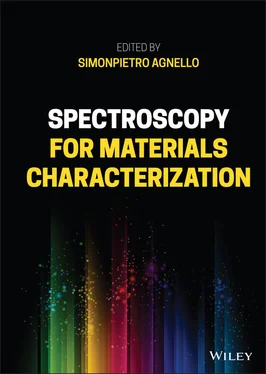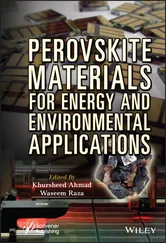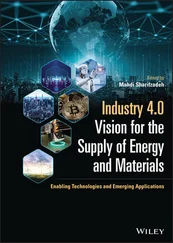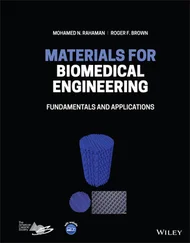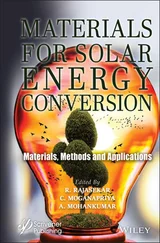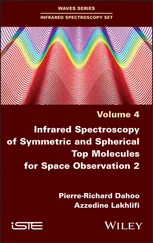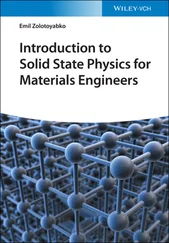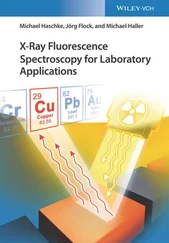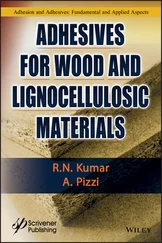Spectroscopy for Materials Characterization
Здесь есть возможность читать онлайн «Spectroscopy for Materials Characterization» — ознакомительный отрывок электронной книги совершенно бесплатно, а после прочтения отрывка купить полную версию. В некоторых случаях можно слушать аудио, скачать через торрент в формате fb2 и присутствует краткое содержание. Жанр: unrecognised, на английском языке. Описание произведения, (предисловие) а так же отзывы посетителей доступны на портале библиотеки ЛибКат.
- Название:Spectroscopy for Materials Characterization
- Автор:
- Жанр:
- Год:неизвестен
- ISBN:нет данных
- Рейтинг книги:5 / 5. Голосов: 1
-
Избранное:Добавить в избранное
- Отзывы:
-
Ваша оценка:
- 100
- 1
- 2
- 3
- 4
- 5
Spectroscopy for Materials Characterization: краткое содержание, описание и аннотация
Предлагаем к чтению аннотацию, описание, краткое содержание или предисловие (зависит от того, что написал сам автор книги «Spectroscopy for Materials Characterization»). Если вы не нашли необходимую информацию о книге — напишите в комментариях, мы постараемся отыскать её.
Learn foundational and advanced spectroscopy techniques from leading researchers in physics, chemistry, surface science, and nanoscience Spectroscopy for Materials Characterization,
Simonpietro Agnello
Spectroscopy for Materials Characterization
Spectroscopy for Materials Characterization — читать онлайн ознакомительный отрывок
Ниже представлен текст книги, разбитый по страницам. Система сохранения места последней прочитанной страницы, позволяет с удобством читать онлайн бесплатно книгу «Spectroscopy for Materials Characterization», без необходимости каждый раз заново искать на чём Вы остановились. Поставьте закладку, и сможете в любой момент перейти на страницу, на которой закончили чтение.
Интервал:
Закладка:
Photoexcitation of any physical system triggers a complex sequence of phenomena occurring over many temporal orders of magnitude after initial photon absorption, and responsible for the ultimate outcome of the photocycle. The primary and most fundamental dynamics, however, usually occur on picosecond (1 ps = 10 −12s) or femtosecond (1 fs = 10 −15s) timescales for many well‐known processes of fundamental interest in photophysics and photochemistry [1]. In particular, it can be argued that femtoseconds are the “fundamental” timescale for any physicochemical process involving short‐range atomic rearrangements, such as chemical reactions or molecular relaxations, because the vibrational period of nuclei always fall in the femtosecond time range (∼10 fs for the OH vibration). Thereby, it is evident that very fast, or rather “ultrafast,” spectroscopic techniques are compulsory to investigate these types of phenomena.
This chapter addresses a variety of experimental methods usually referred to as ultrafast or femtosecond spectroscopies. These techniques are capable of time resolutions reaching a few femtoseconds, which are essential to reconstruct in detail the course of events initiated by photoexcitation, achieving a comprehensive understanding of the photocycle of any physical system. Examples of typical phenomena which are addressed by femtosecond methods are molecular energy relaxations, such as internal conversion or intersystem crossing [2], solvation dynamics, electron and energy transfer events [3–5], fluorescence quenching [5], dynamics of charge carriers and excitons in semiconductors [6], and photochemical reactions [7]. For these reasons, femtosecond techniques are today well‐established and considered a fundamental tool in spectroscopy.
For example, whenever a molecule in solution phase is electronically excited by UV or VIS light, the surrounding solvent responds to the electronic redistribution within the molecule by a series of short‐ and long‐range rearrangements, collectively named solvation dynamics . These dynamics typically occur on femtosecond and picosecond timescales [3, 4] and are a key component of the behavior of any system in solution phase. As another example, when charge carriers in a bulk or nano‐sized semiconductor are promoted to a high energy state by photon absorption, their successive relaxation involves processes, such as electron–electron or electron–phonon scattering, or Auger recombination, which are of fundamental importance and equally take place on such, ultrafast, timescales [8, 9].
The general idea behind most femtosecond spectroscopies is to use at least two, or more, light pulses with very short time durations to follow in real time the undergoing dynamics. One of the pulses, for example, is resonant to an electronic transition of the investigated system, and its absorption by the system causes an injection of energy and a quasi‐instantaneous redistribution of the electronic charge. Then, the successive dynamics are studied by taking spectroscopic snapshots of the excited systems at variable delays, by the use of a second light pulse. This can be done by using one of several possible spectroscopic observables, capable of retrieving different types of information, such as the UV/VIS absorption, reflectance or luminescence, or the infrared vibrational absorption. For example, transient absorption (TA) or pump/probe methods, discussed in Section 3.3, exploit a pump/probe approach, where the changes of visible or infrared absorption are detected and followed in time after excitation. Other methods rely on different observables, such as the spontaneous emission (ultrafast fluorescence, discussed in Section 3.4) or the Raman scattering ( Section 3.5). From the technical point of view, femtosecond spectroscopies are characteristically nonlinear optical experiments, which make large use of a wide toolbox of laboratory techniques in nonlinear and laser optics, to manipulate, generate, detect, and control femtosecond‐pulsed light beams in various spectral regions, as described in Section 3.2.
The development of the field of femtosecond spectroscopy has been characterized by a progressive and dramatic improvement in what can be practically achieved. With time, a femtosecond time‐resolved version has been developed for almost any traditional spectroscopic technique, including, in recent times, photoemission spectroscopy [10], X‐ray scattering [11], X‐ray absorption [12], or optical microscopy methods [13]. The last frontier in the field is pushing even more the time resolution of these experiments, to the extent that the first attosecond (1 as = 10 −18s) experiments have been emerging in the last years [10, 14].
When these methods are properly combined, it is often possible to literally track in real time the flow of charge and energy through time and space after photoexcitation. The potential of these methods is testified by their applications on a wide variety of different systems and nanosystems, such as semiconductor NPs [8], molecules and macromolecules in solution [15], carbon nanomaterials [16], and many others, always providing very useful insight on their photoinduced behaviors. Besides reconstructing the photocycle, a further capability of femtosecond experiments is disentangling homogeneous and inhomogeneous broadenings of the spectral lines, via methods like TA hole burning [17] or four‐wave mixing [18], which do not have an equivalent in traditional spectroscopy.
The chapter is organized as follows. First, a general presentation of the characteristics of fs laser beams will be presented in Section 3.2, as needed to follow the rest of the chapter. Then, three well‐established ultrafast spectroscopic methods will be described: transient absorption ( Section 3.3), femtosecond‐resolved fluorescence ( Section 3.4), and femtosecond Raman ( Section 3.5). In the final section ( Section 3.6), four different case studies will be presented, to illustrate the utility of these techniques in selected real‐case scenarios.
3.2 Ultrafast Optical Pulses
3.2.1 General Properties
An ultrafast optical pulse is an electromagnetic pulse characterized by a very short duration (from few femtoseconds to few hundreds of femtoseconds) and a broad spectral distribution (10–100 nm FWHM) in the near‐infrared, visible, or UV spectral range. Generating ultrafast pulses relies on the use of a mode‐locked laser, which exploits the amplification of a large number of laser modes oscillating in‐phase within the laser cavity [19, 20]. The most widespread type of femtosecond mode‐locked laser in modern spectroscopy is the Ti:sapphire laser. A typical Ti:sapphire oscillator emits laser pulses with a central wavelength tunable around 800 nm, typical duration of 10–100 fs, energy of 1–100 nJ pulse −1, and repetition rate of ∼80 MHz. By using an external amplifier, these pulses can be then amplified up to μJ or mJ per pulse with a proportional reduction of the repetition rate. Because of the very short duration, these numbers imply intensities as high as tens of GW per cm 2, which can easily be achieved even without focusing. These intense, amplified pulses are then available to feed a range of experiments in nonlinear optics and spectroscopy such as those described in this chapter. The details of mode‐locking will not be further discussed here, and the rest of this section will be devoted to describing some general properties of propagating femtosecond light pulses.
The time dependence of the oscillating electric field in an amplified ultrashort pulse is described by  . The wave amplitude follows a Gaussian envelope, with the shape factor γ proportional to the squared inverse of the duration of the pulse: γ ∝ Δ t −2. To obtain the spectral content of the pulse, one can calculate the Fourier transform of E ( t ), which is shown to be again a Gaussian function, centered at the frequency ω 0and with a frequency width Δ ω proportional to γ 1/2[19]. This entails a strict relation between the time duration of the pulse and its spectral width, according to Heisenberg's uncertainty principle
. The wave amplitude follows a Gaussian envelope, with the shape factor γ proportional to the squared inverse of the duration of the pulse: γ ∝ Δ t −2. To obtain the spectral content of the pulse, one can calculate the Fourier transform of E ( t ), which is shown to be again a Gaussian function, centered at the frequency ω 0and with a frequency width Δ ω proportional to γ 1/2[19]. This entails a strict relation between the time duration of the pulse and its spectral width, according to Heisenberg's uncertainty principle  . This leads to the fundamental consequence that ultrashort laser pulses are intrinsically non‐monochromatic: in order to have pulse durations in the femtosecond range, it is compulsory to have a broad enough spectral distribution, typically in the tens of nanometers. When the equivalence of the uncertainty principle is verified, the pulse is named Fourier transform‐limited. This condition can only be perfectly achieved by a Gaussian pulse, and guarantees the shortest possible pulse for a given spectral width. For example, a transform‐limited Gaussian pulse with 10 fs duration, peaking at 800 nm, shows a spectral bandwidth of 94 nm. As discussed hereafter, one consequence of the broad bandwidth of femtosecond pulses is that their propagation is affected by strong dispersion effects [19, 20]. On the other hand, their extremely high peak intensities, due to the short duration, lead to intense nonlinear optical effects.
. This leads to the fundamental consequence that ultrashort laser pulses are intrinsically non‐monochromatic: in order to have pulse durations in the femtosecond range, it is compulsory to have a broad enough spectral distribution, typically in the tens of nanometers. When the equivalence of the uncertainty principle is verified, the pulse is named Fourier transform‐limited. This condition can only be perfectly achieved by a Gaussian pulse, and guarantees the shortest possible pulse for a given spectral width. For example, a transform‐limited Gaussian pulse with 10 fs duration, peaking at 800 nm, shows a spectral bandwidth of 94 nm. As discussed hereafter, one consequence of the broad bandwidth of femtosecond pulses is that their propagation is affected by strong dispersion effects [19, 20]. On the other hand, their extremely high peak intensities, due to the short duration, lead to intense nonlinear optical effects.
Интервал:
Закладка:
Похожие книги на «Spectroscopy for Materials Characterization»
Представляем Вашему вниманию похожие книги на «Spectroscopy for Materials Characterization» списком для выбора. Мы отобрали схожую по названию и смыслу литературу в надежде предоставить читателям больше вариантов отыскать новые, интересные, ещё непрочитанные произведения.
Обсуждение, отзывы о книге «Spectroscopy for Materials Characterization» и просто собственные мнения читателей. Оставьте ваши комментарии, напишите, что Вы думаете о произведении, его смысле или главных героях. Укажите что конкретно понравилось, а что нет, и почему Вы так считаете.
